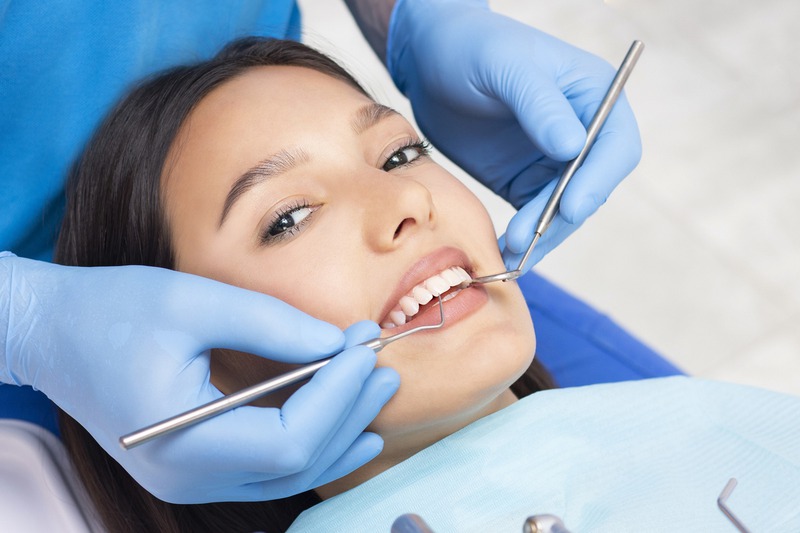How Does TMJ Therapy Assist in Improving Facial Comfort?
Facing each day with facial discomfort can significantly impact one’s quality of life. Temporomandibular joint (TMJ) disorders contribute to a spectrum of symptoms that can include pain, stiffness, and limited movement of the jaw. TMJ therapy is a targeted approach aimed at alleviating these symptoms. Through various treatment options, individuals suffering from TMJ disorders can find relief and restore their facial comfort.
TMJ Disorders
The temporomandibular joint is the hinge that connects the jawbone to the skull, and disorders in this area can lead to discomfort and compromised movement. Symptoms often include jaw pain, clicking or popping sounds when moving the jaw, and even headaches or earaches. These symptoms can arise from a variety of causes such as injury, arthritis, or habitual clenching and grinding of the teeth.
Approaches to TMJ Therapy
TMJ therapy encompasses a series of treatments designed to address the root causes and relieve the symptoms of TMJ disorders. Effective therapy can lead to improved facial comfort and function. Treatments vary from non-invasive practices to surgical procedures depending on the severity of the condition.
Non-Invasive Therapies
-
Pain relief medications
-
Muscle relaxants
-
Behavioral changes, including stress management and jaw exercises
Physical Therapy
Physical therapy offers exercises and techniques to strengthen jaw muscles, improve flexibility and reduce tension. This can include massage, heat and cold treatments, and guided movements that target the affected joint.
Dental Appliances
Dental splints or mouthguards are commonly used to prevent teeth grinding and clenching, which can worsen TMJ symptoms. These devices can reduce strain on the joint and provide relief, especially during sleep.
Advanced TMJ Therapy Options
Corticosteroid Injections
For more severe cases, corticosteroid injections might be administered directly into the joint to reduce inflammation and pain.
Surgical Interventions
When the aforementioned therapies do not provide sufficient relief, surgical options, from minimally invasive to open-joint surgery, may be considered as a last resort.
Personalizing TMJ Therapy
TMJ therapy is not a one-size-fits-all approach. Treatment plans should be tailored to each patient’s unique situation, taking into account the severity of symptoms and overall health. For instance, a general dentist in McPherson might develop a customized treatment plan that begins with non-invasive options, advancing to other methods only if necessary.
Dental Health Professionals
Dentists and oral healthcare professionals play a key role in diagnosing and treating TMJ disorders. Regular dental checkups allow for early detection, which can prevent conditions from worsening. In some cases, addressing dental issues, like malocclusion, can indirectly improve TMJ symptoms.
Complementary Therapies
For a person with TMJ disorders, finding relief is often a matter of trying out different options. Adding to regular medical care, complementary therapies can be very helpful. They are extra treatments you can use along with your main treatment to help with symptoms. These therapies include a range of treatments like massage therapy, which can relax the muscles of the jaw, face, and neck, and chiropractic care, which involves adjusting the spine and other parts of the body for better alignment.
Stress Reduction Techniques
Stress can make TMJ symptoms worse, so using ways to lessen stress is recommended. These methods help people calm down and can also help their TMJ symptoms.
-
Meditation: This method involves sitting in a quiet spot and paying attention to breathing or a word that’s repeated. It can help a person’s body to calm down and may lead to less tension in the jaw.
-
Yoga: Yoga combines body movements with controlled breathing, and holding poses can stretch and strengthen the body. Calming the mind in yoga might also help with jaw tension.
-
Gentle Stretches: Moving the body in soft, slow movements can help maintain muscle flexibility. It might also help people with TMJ to keep their jaw muscles loose and pain-free.
Nutritional Adjustments
Making changes to what you eat can sometimes help your TMJ symptoms. If you have TMJ disorders, paying attention to your diet can be part of managing symptoms. Soft foods may put less pressure on the jaw. On the other hand, avoiding chewy or hard foods can prevent extra strain that might worsen the pain.
-
Soft Foods: Eating things like yogurt, soup, or applesauce can be easier on the jaw because they don’t require a lot of chewing.
-
Avoiding Hard or Chewy Foods: Staying away from items like chewing gum, caramel, or tough meats may provide relief by reducing the workload on your jaw.
People with TMJ disorders can also speak to a nutritionist who can help them choose foods that are nutritious and jaw-friendly. With these dietary considerations, individuals may find some improvement in their TMJ-related discomfort without compromising their nutritional needs.
Linking TMJ Therapy with Other Dental Treatments
TMJ therapy can be part of a comprehensive dental care approach. While addressing TMJ issues, patients might also explore other treatments to improve their oral health and aesthetics. For example, the benefits of dental implants include restored function and appearance following tooth loss, which can contribute to overall facial structure and comfort.
Some people use things like cold packs or heat applications to lessen TMJ discomfort. Cold can reduce swelling and pain, while heat might relax the muscles and improve blood flow. Care has to be taken with temperature to avoid skin damage. People are encouraged to try out these various therapies to see what brings them the most comfort.
Expectations and Outcomes
With the proper approach, many individuals experience significant relief from TMJ symptoms. The goals of TMJ therapy are to decrease pain, restore function, and improve the quality of life. However, patient engagement in the therapeutic process is key to achieving these outcomes.
This might include adhering to prescribed exercises, wearing dental appliances as recommended, and engaging in regular follow-ups with their healthcare provider. Similarly, improving one’s smile through treatments like professional teeth whitening can boost confidence and complement the positive results of TMJ therapy.
Conclusion
In closing, TMJ therapy serves as a beacon of relief for those burdened by facial discomfort stemming from temporomandibular disorders. Through individualized treatment plans, professional guidance, and sometimes adjunctive dental services, many find their way back to comfortable daily living. Ensuring proactive engagement with healthcare providers and adherence to recommended treatments will enhance the effectiveness of TMJ therapy and contribute to sustained facial comfort.
Categories

Recent Posts
Theme by The WP Club . Proudly powered by WordPress

